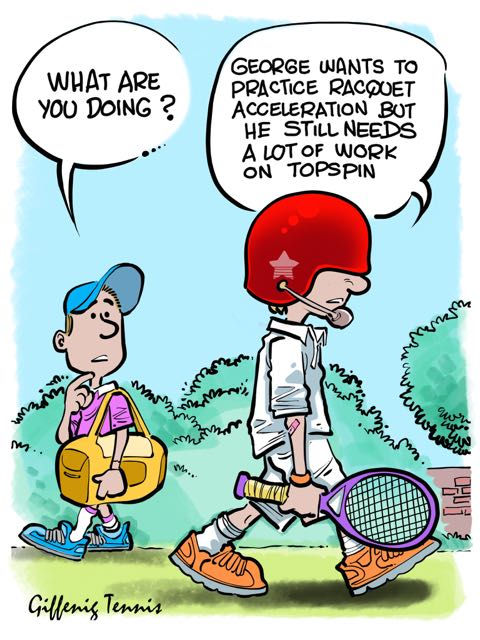Power vs. Control
- Edgar Giffenig
- Jun 8, 2019
- 2 min read

There is no doubt that power plays a determinant role in today’s game. Professional players are bigger, stronger and able to generate massive racquet acceleration. So, how do they get there?
The original coaching advice was quite straightforward and logical: first you develop solid technique and control, then, you work on power. But as power became more conspicuous, a different coaching theory seemed to emerge: emphasize racquet head speed early even if it means loss of control. In time control will develop.
Both approaches have their problems. Players who grow up overemphasizing control have a very hard time changing their game style to play more aggressively later on, especially when they where very successful emphasizing consistency in the younger age groups. As for the ultra aggressive players, they usually have a hard time developing confidence when they are constantly losing matches through unforced errors.
So, what is the best approach? Most likely, it is a blend of both philosophies combining drills that solely emphasize control, drills where racquet acceleration is the sole goal and drills that combine control and acceleration. For example, a pure control drill would ask players to hit 20 balls in a row with one player hitting crosscourt and the other one down the line. A combined drill would ask players to increment the speed of their shots at set intervals. For example: Hit five slow balls, and increase the shot speed after every set of five until you miss. And a pure acceleration drill would ask players to swing at maximum speeds totally disregarding control in different scenarios: alternating heavy and light racquets, combining shadow swings and regular swings or swinging at drop feeds from the coach.
By combining all these types of drills and working constantly during practice to find the fastest speed at which a player can still control the ball, players can develop both control and power simultaneously avoiding abrupt and difficult changes throughout the development process.
More importantly, as a coach, you may be able to leave your helmet at home!!!




Comments